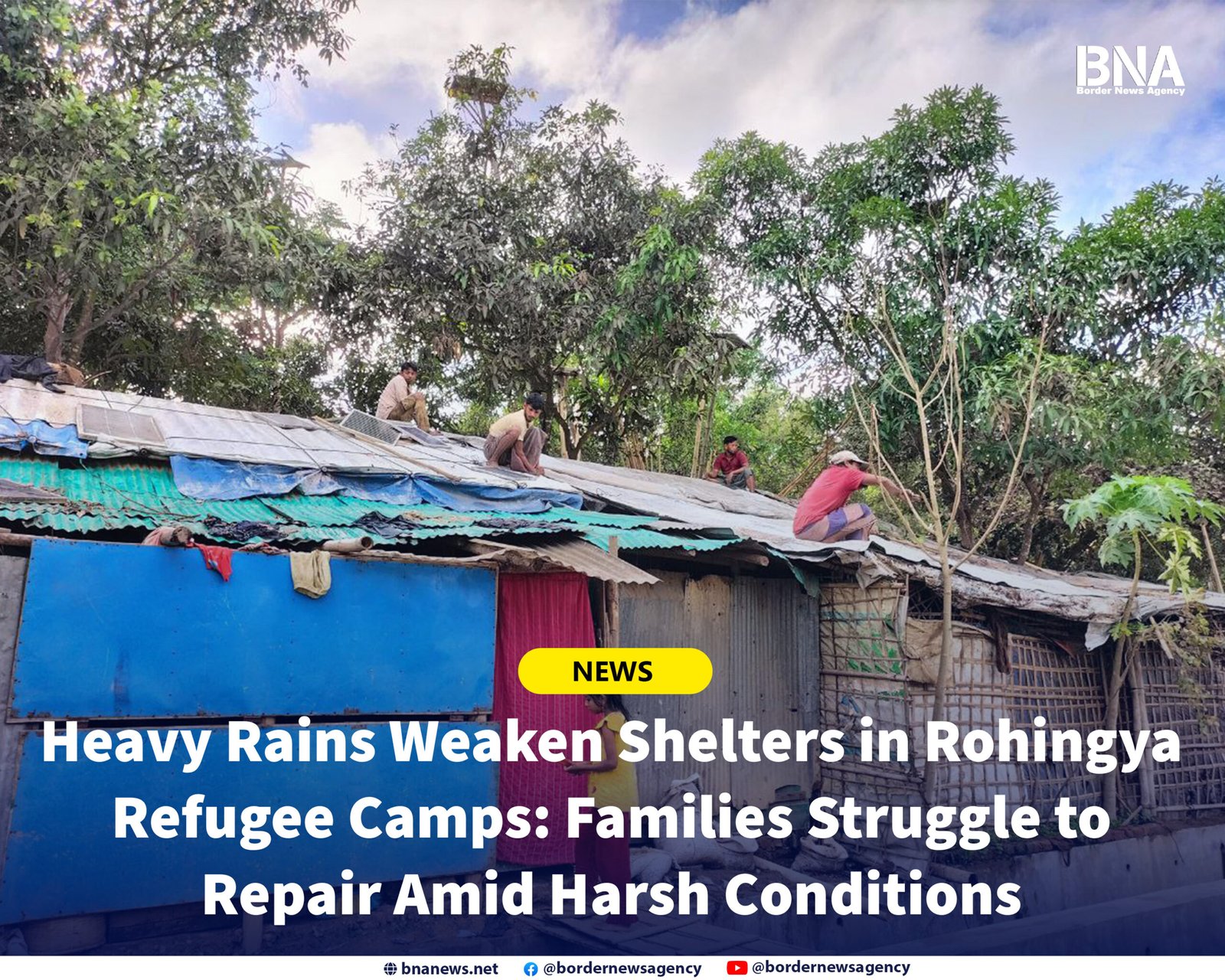Border News Agency
Cox’s Bazar, Bangladesh, May 2025
In the sprawling refugee camps of Cox’s Bazar, home to nearly a million Rohingya refugees, the skies have opened once again with the arrival of the monsoon season. Over the past several days, persistent and heavy rains have pounded the tarpaulin-covered hillsides, turning dusty paths into rivers of mud and pushing the fragile shelters of thousands to their limits.
As the rain continues to fall, many of these makeshift shelters constructed primarily from bamboo, tarpaulin, and other temporary materials have started to weaken, with some collapsing under the weight of water and others being swept partially away by flooding and soil erosion. In Camp 13, Noor Begum, a mother of five, looks on as her eldest son tries to tie down the loosened roof of their shelter. “The rain doesn’t stop. The water comes from the hills and floods our floor. We use plastic sheets and sacks to block it, but everything is wet,” she said.
In many parts of the camp, scenes like this have become all too common. Families, young and old, can be seen climbing atop their huts, hammering bamboo poles, reinforcing walls with sandbags, and layering plastic sheets to keep out the relentless rain. Children help by scooping muddy water out of their homes with bowls, while women dry soaked bedding and clothing on lines under gray skies.
With little financial means and even fewer resources, repairing a shelter in the camps is an enormous task. Many families must rely on recycled materials, assistance from neighbors, or small distributions from NGOs. The challenge is compounded by the hilly terrain of the camps, which makes certain areas especially prone to landslides.
Mohib Ullah, a camp resident in Kutupalong, said, “Our home was already weak. Last night, the wind was strong, and water came in from the roof. We stayed up the whole night. We are afraid another storm could bring the whole house down.” His bamboo walls are sagging, and a portion of the roof has already caved in.
Local and international humanitarian organizations have sprung into action to assess the damage and distribute emergency shelter kits, but the demand far exceeds the supply. The Office of the United Nations High Commissioner for Refugees (UNHCR) and other agencies have issued warnings that more heavy rainfall is expected in the coming weeks, raising fears of further damage, increased disease outbreaks, and worsening humanitarian conditions.
Despite the hardships, the spirit of resilience is visible everywhere. Communities are coming together, helping one another to fix what they can. Young men have organized to clear drainage canals to prevent further flooding, while women gather to share tarps and blankets. In the absence of formal construction tools, hammers fashioned from scrap wood and rope twisted from plastic waste are being used to mend the broken.
For many Rohingya, the rains are a cruel reminder of their ongoing vulnerability displaced from their homeland, living in precarious conditions, and now facing the wrath of nature. Yet, their determination to survive, to protect their families, and to hold onto their dignity remains steadfast.
As the monsoon season deepens, so too does the need for urgent international support. The Rohingya have weathered violence, displacement, and uncertainty. Now, they must weather the storm literally again. And once more, their struggle quietly unfolds under the grey skies of Cox’s Bazar.






